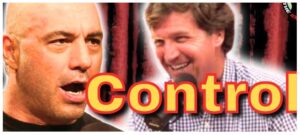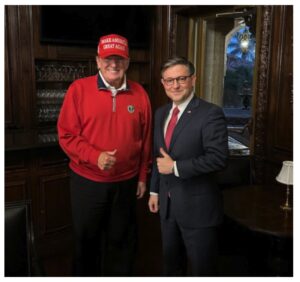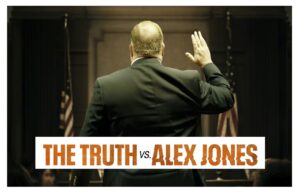By Larry Rivera with Jim Fetzer
“After that shooting incident, of course, pandemonium broke out. The Secret Service men, well trained in their jobs, immediately began fanning out into the crowd, looking for the assassin”–Walter Cronkite (22 November 1963)
One of the most striking of more than 15 indications of Secret Service complicity in setting JFK up for the hit is that the motorcycle escort was cut down to four and instructed not to ride forward the rear wheels.
One of the officers observed that it was the damnedest formation he had even seen–arranged that way, no doubt, to minimize the protection that they would afford the President from shooters in Dealey Plaza.
Here is a diagram of the limo and the four officers respective locations. For other basic information about the assassination that everyone should know, see, for example,“Dealey Plaza Revisited: What happened to JFK?” (2009):
 Officer Billy Joe Martin was out the left/outside, Officer Robert “Bobby” Hargis on the left/inside. Officer James Chaney was on the right/inside and Officer Douglas Jackson on the right/outside. They were some of the 10 closest witnesses to the assassination never called by the Warren Commission to testify. Larry Rivera, “The JFK Horsemen”and “The JFK Horsemen, Part 2”, has discovered what they had to say, which explains why they were never called. In this study, he turns his attention to a photo that, to the best of my knowledge, has never before been analyzed.
Officer Billy Joe Martin was out the left/outside, Officer Robert “Bobby” Hargis on the left/inside. Officer James Chaney was on the right/inside and Officer Douglas Jackson on the right/outside. They were some of the 10 closest witnesses to the assassination never called by the Warren Commission to testify. Larry Rivera, “The JFK Horsemen”and “The JFK Horsemen, Part 2”, has discovered what they had to say, which explains why they were never called. In this study, he turns his attention to a photo that, to the best of my knowledge, has never before been analyzed.Unpacking the mysteries of the Miller photo
by Larry Rivera
The Miller photograph has never been subjected to analytical scrutiny the way many other photographs and images have been in the JFK assassination record. Photographs such as the Altgens6, the Oswald backyard photographs, and the Zapruder and Nix films have been studied by researchers and proven to have been altered in one way or another.
 Early researcher/investigator Shirley Martin was the very first person who noticed the figure of a “running man” seen behind the parapet of a building next to the Corham Motors dealership, who seemed to be running with a rifle and wearing a shooting cap of sorts. We can now add the Miller photograph to the long list of photographs and films in the JFK assassination record that are suspected of having been altered.
Early researcher/investigator Shirley Martin was the very first person who noticed the figure of a “running man” seen behind the parapet of a building next to the Corham Motors dealership, who seemed to be running with a rifle and wearing a shooting cap of sorts. We can now add the Miller photograph to the long list of photographs and films in the JFK assassination record that are suspected of having been altered.It was taken by amateur photographer David Miller while he stood on the shoulder of the Northbound Stemmons Freeway, in between Corham Motors and Cobb Stadium, as the stricken President was being rushed to Parkland Hospital. Our research has revealed that there are two different versions of this photograph. One was published by the Warren Commission in CD-87, and one was published by The Saturday Evening Post (14 December 1963) as follows:
In order to differentiate one image from the other, we will call the version published by the Warren Commission “Miller CD-87”, and the version published by The Saturday Evening Post, “Miller SEP”. This article addresses the inconsistencies of the Miller photograph and how it was manipulated to create a false version of what really happened on Elm Street.
Photos are not the same
Upon simple inspection, it is quite obvious that the two photographs are not exact duplicate copies of one another. In order to understand the underlying currents that seem to permeate the mysteries of the Miller Photograph, it is essential to set forth the background of CD-87. “Commission Documents” were supporting documents that were surreptitiously produced by the Warren Commission and officially contained the “raw” data published in the 26 volumes, which in turn contained the actual exhibits and testimony of witnesses that were deposed by the Commission. The most important and revealing documents were quietly ensconced in these collections.
After publication of The Warren Report (1964), more than 200 Commission documents were suppressed and classified for years, where some were locked away for decades. JFK research pioneer and stalwart Harold Weisberg waged decades of litigation against the government, trying to pry these documents away from the National Archives. Some Commission documents were released in bits and pieces, where certain pages were deemed too sensitive to be seen by investigators and researchers. In order for Commission Documents to be released in their entirety, the CIA, the Secret Service and the FBI had to examine them and approve their release (that they were apt for release).
CD-87 was one of those documents which took 13 years to completely see the light of day, and finally fall into the hands of researchers. It was not completely released until 1976. The title of CD-87 is, “Secret Service report of 08 Jan 1964 re: Oswald”. Within the 1,135 pages which make up CD-87 in its entirety, the Commission decided to stash away some of the most important photographs of the assassination record, among them the James “Ike” Altgens collection, including numbers 5, 6, and 7, the Moorman photograph, many photographs of the 6th floor, including the so called “snipers nest”, the Tippit crime scene, photos taken inside the Texas Theater, witness affidavits, and innumerable documents that were used to railroad Lee Oswald.
The documents are not arranged in any particular order and jump randomly from one subject to the next. After perusing this collection, it is quite obvious that not a single document contained here is exculpatory of Lee Oswald and most, if not all of them were picked to magnify his guilt. But that is not what this article is about. Of particular interest in CD-87, on page 423, we find the Miller photograph in all of its splendor.
The Limo Rider, Part One
Let’s begin by discussing the back seat limo rider’s right hand in Miller CD-87. Not a single finger of his right hand is recognizable here, which raises the question of whether the original of the photograph showed a weapon in his hand:
What reason could there possibly have been to do this? Moreover, the images of the figures in front of JFK, which are presumably the passengers in front of him, Governor John Connally and his wife Nellie, are totally unrecognizable:
The Miller SEP
Here is a comparison of the left foot which hangs over the Lincoln’s right quarter panel. The image at right is from Miller CD-87 and clearly shows that it has been crudely worked on. It is obvious, for example, that the curvature of the instep has been modified, perhaps in an attempt to make it look more like a right foot. The curvature of the sole has also been reduced. These alterations have decreased the height of the heel and have caused the entire foot to take on a more upright and vertical position.
So to whom does this left foot belong? In their haste to enhance the heroic actions of Clint Hill, who officially was the only Secret Service Agent to react to what was happening in the Lincoln limousine, the media published this photo, which shows “Agent Hill” straddling the back seat of JFK’s Continental. The only problem with doing this is that they neglected to realize that the foot that sticks out in the Miller photograph is a LEFT foot rather than a RIGHT foot.
Perhaps they were unaware that the Miller photograph had already been published byThe Saturday Evening Post on 12/14/63, as shown above which is a scan from the original magazine. The emergence of this photograph, of course, eliminates the possibility that this person’s left leg could have actually been contorted in a “figure four”, thereby explaining the position of the foot seen in the photograph:
In 2011, Professor Jim Fetzer published the article, “JFK: Who’s telling the truth: Clint Hill or the Zapruder film?”, where he–and John P. Costella, Ph.D.–laid to rest any doubts regarding Hill’s actions during the assassination and the extent to which they are at variance with what is shown in the extant version of the Zapruder film. Fetzer article cites the following passage from CE-1024, which is a Secret Service report filed by Clint Hill on 30 November 1963:
Hill’s account implies that he was much closer to the President and Mrs. Kennedy than what is seen in the Miller and the back-seat-rider photographs shown above. In summarizing Clint Hill’s testimony, Professor Fetzer wrote there:
The escort officers speak
In 1971, Bobby Hargis, Douglas Jackson and Sergeant Stavis Ellis were interviewed for Fred Newcomb and Perry Adams, Murder from Within (written 1974; published 2011). Hargis and Jackson were within a couple of feet from the limousine when the assassination took place. Of the hundreds of hours of testimony recorded by Newcomb and Adams, several hours of conversations with the motorcycle escort officers who rode with the motorcade were never transcribed. The importance of these conversations was recently realized, where Officers Hargis and Ellis spoke of a second Secret Service Agent in addition to Clint Hill climbing onto the JFK limousine. This is what they had to say:
Bobby Hargis:
Sergent Stavis Ells:
A third member of the motorcycle escort, Douglas Jackson, spoke and wrote about Secret Service Agents dismounting from their follow up car and racing on foot past the limousine with their weapons drawn. Even though he did not mention specifically that a second Agent entered the limousine, he does offer compelling details about the actions of Secret Service Agents at time, none of which is seen in the Nix, the Muchmore or the Zapruder films.
Douglas Jackson:
This is what Jackson wrote the night of the assassination, which was stashed away for years in a mislaid manuscript:
Highway Patrolman Milton Wright
Highway Patrolman Milton Wright, who was chauffeuring the car where Mayor Earle Cabell and his wife were riding, had this to say about what he saw:
Milton Wright:
Wright noted how motorcycle policemen dismounted after the second shot with guns drawn and how the only people he could see were “Agents” (emphasis plural).
Toni Glover at Houston and Elm
Eleven year old Toni Glover was standing on a pedestal on Houston Street and had a clear view down Elm Street as the limousine approached the triple overpass. In a recent interview with Ms. Glover by Professor James Norwood, she offered her interpretation of the actions of the Secret Service:
“…When I saw the head explode and there would have been a glisten, I turned to my mom and said, ‘Mom, someone threw fireworks in the car, and the police are really, really mad.’ I did that because of the sparkle and the spray…You know, it only took about…And then she jumped out of the car.” (30:00-31:00)“Clint Hill, what a great guy! Um, yeah, and that was part of the ‘Oh, my god, the police are mad,’ you know, the police had looked at each other, and then he jumped on the back and shoved her back in.” (38:00)
And the most trusted man in America reported on CBS, “After that shooting incident, of course, pandemonium broke out. The Secret Service men, well trained in their jobs, immediately began fanning out into the crowd, looking for the assassin”. But how could Walter Cronkite (22 November 1963) have possibly known there was only one assassin?
Needless to say, the actions of Secret Service Agents described by these witnesses are not seen in the either the extant Nix, Zapruder or Muchmore films that have available to the public today, which are regarded by some as irrefutable “evidence” of what happened on Elm Street or as the nearest thing we have to “absolute truth” about these events.
The missing sunglasses
Returning to our analysis of the Miller photograph, one of the most striking impressions upon examining the image, is that the Secret Service man who is seen straddling the back seat of the limousine, looks very little like Clint Hill. This person seems fair haired, with an abundant tuft of hair flowing over his forehead, where Hill was dark haired and with a much more receding hairline at the top.
Besides the anomaly of the unrecognizable right hand mentioned earlier, this person is not wearing the sunglasses seen on Hill in numerous photographs of the day, and seems to be wearing some sort of vest which covers the vertical cut of his suit coat lapel. All photos of Hill taken that day show his dress shirt prominently displayed under the V-cut of his suit coat.
 If there were agents with and without sunglasses, then there had to have been at least two, which is stunning, since no one before has ever suggested that anyone was on the back of the Lincoln other than Clint Hill.
If there were agents with and without sunglasses, then there had to have been at least two, which is stunning, since no one before has ever suggested that anyone was on the back of the Lincoln other than Clint Hill.Could it be JFK’s foot?
 It has been well documented that most of the posterior portion of JFK’s skull had been blasted out exposing not only his brain and gray matter, but most, if not all, of his cerebellum. A fist sized hole was seen in the back of his head, not only by most of the medical personnel at Parkland Hospital, but by Agent Hill as shown above.
It has been well documented that most of the posterior portion of JFK’s skull had been blasted out exposing not only his brain and gray matter, but most, if not all, of his cerebellum. A fist sized hole was seen in the back of his head, not only by most of the medical personnel at Parkland Hospital, but by Agent Hill as shown above.The cerebellum controls all voluntary motor functions in the human body, therefore, to infer that a mortally wounded person with extreme cerebellar damage could somehow turn on his/her stomach and raise his/her left leg to place it in the position shown in the Miller photograph is indeed a stretch of the imagination.
The only other possibility to consider is that external forces flipped the President into a prone position and arranged his leg and foot in that manner. This painting is a representation of what most people, who were close enough to the limousine, saw as it pulled in to Parkland Hospital:
 The Limo Rider, Part Two
The Limo Rider, Part Two
This photograph from The Dallas Times Herald was published by Chief Jesse Curry,“JFK Assassination File” (1969):
Ostensibly, the “Clint Hill” limo rider is still perched upon the back seat holding on for dear life on a car that is going 70-75 miles an hour. Again, when subjected to scrutiny, this photograph fails to deliver. One single characteristic of the image gives it away: the sunglasses! The following collage offers two different views of Clint Hill’s sunglasses for comparison. Does anyone think that they are one and the same? Which of these “sunglasses” have been painted in?
Comparing left feet
One of the most recognizable features of Clint Hill’s shoes was the height of the heel and the distinct curvature of the shoe itself. Fortunately, there are several photographs that show the actual footwear that Hill wore that day, which allow for comparison between one another.
The Altgens5 and Altgens7 photographs show different angles of his left foot, which consistently show the height and prominence of the heel of his shoes. Both of these coincide with that shown in the Miller SEP photograph:
In fairness to those who might still believe that the left foot belongs to JFK, there happens to be a photograph taken earlier that day in Fort Worth, that depicts both Hill and JFK’s left feet within “feet” of each other in the same photograph. (no pun intended). The shoes worn by JFK show a flatter pattern in the tip than those worn by Hill, which exhibit more pointed and curved characteristics. The curvature of Hill’s shoe more so resembles that shown in the Miller SEP image.
Going into scientific and logical scenarios, when in a hypothesis, all untenable possibilities have been eliminated, the remaining choice, as unlikely as it may seem would tend to be the correct assumption. The obvious conclusion we must draw when comparing Miller CD87 and Miller SEP, is that the former has been altered to mask the left foot sticking out of the limousine. The publication of the David Miller photograph in the 14 December 1963 issue of The Saturday Evening Post showed the original depiction of the left foot in its unaltered state.
This was entirely overlooked by those who later tried to re-invent the photograph and file it away in CD-87. The perpetrators of this hoax were faced with the dilemma of deciding between the foot belonging to the back seat limo rider or to President Kennedy. Both of these are easily proven impossible here. It can be safely inferred, therefore, that the left foot shown in the Miller photograph belongs to Clint Hill, where the limo rider seen straddling the back seat in the Miller and Dallas Times Heraldphotographs remains unidentified to this day.
The Running Man
Finally, we cannot close our discussion of the Miller photograph without addressing the issue of “running man”. The famous running man with rifle prompted the FBI to give Shirley Martin a visit in response to the telegram she sent to the Warren Commission in 1964. The image is credited to Steve Martin, who wrote the following about it:
Evidence of a back-up shooter was first found by Shirley Martin in the photograph we have been discussing here, which was published in The Saturday Evening Post (14 December 1963). It includes what appears to be a man with a rifle on top of the Corham Motors building on the Stemmons Expressway. Police logs indicate that another rifleman was on Cobb Stadium, which would have permitting crossfire at this location. Many of those who are aware of this photo have inferred that the shooter had been notified that the job had been done and therefore he was no longer needed.
Larry Rivera, the son of a career military man who served as a CID officer in the US Army, is the leading expert on Billy Nolan Lovelady and on the JFK motorcycle escort officers. Among his previous publications is, “The JFK Escort Officers Speak: The Fred Newcomb Interviews”. [NOTE: This is one in a series of articles being republished since veterans today.com deleted them in a dispute with its Senior Editor, Gordon Duff, about which I have since written several articles.]
Please follow and like us:


























